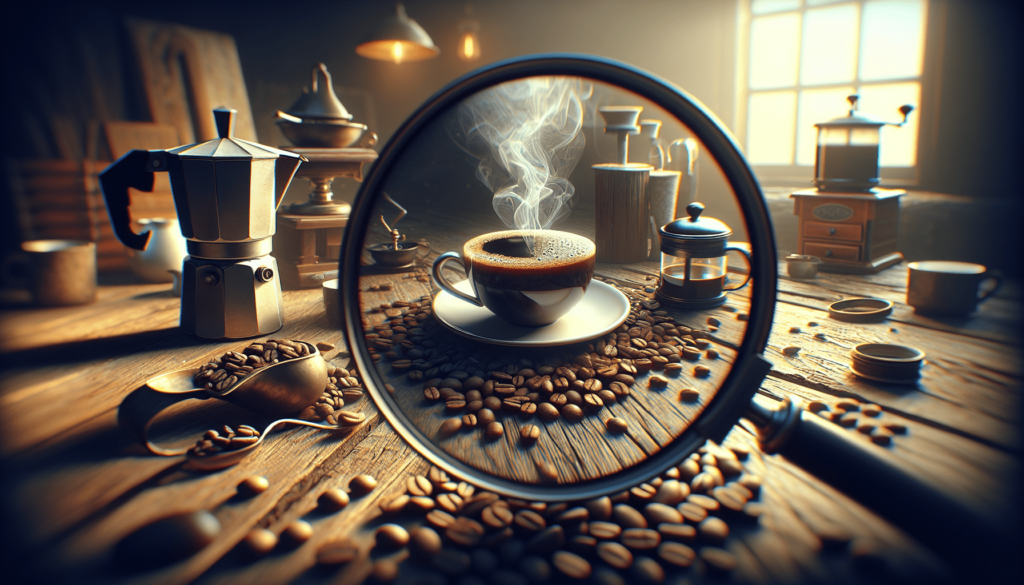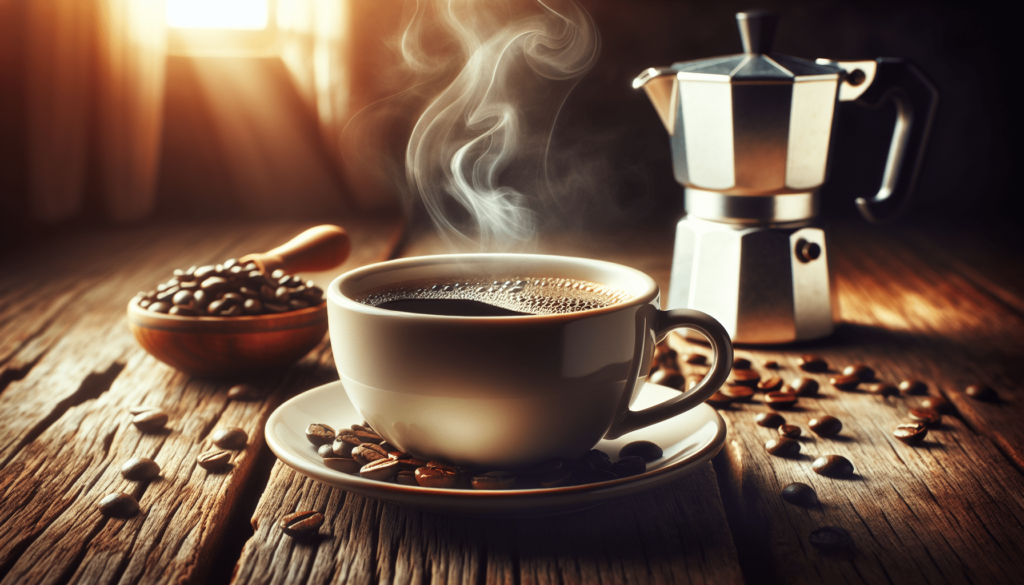Have you ever wondered if the process of making coffee is actually called brewing? Whether you’re a coffee aficionado or just someone who enjoys a morning cup of joe, it’s a question worth exploring.
Is It Really Called Brewing Coffee?
The short answer is yes, making coffee is generally referred to as brewing. Brewing is a term most frequently associated with coffee, but it’s also used when talking about making tea and beer. The term “brewing” specifically means the process of extracting flavors from various plant materials by immersing them in water. Coffee brewing involves various techniques and methods to extract the flavors from the coffee beans.
What Does Brewing Mean?
Brewing is the process of combining water with another substance to create a beverage. Whether it’s coffee, tea, or beer, the essence of the brewing process remains similar. For coffee, the method involves combining ground coffee beans with hot water, allowing the water to pass through or steep with the grounds, and then separating the liquid coffee from the used coffee grounds.
Why Is It Called Brewing?
The term “brewing” originated from the Old English word “breowan,” which means to prepare a beverage through boiling and fermenting. Over time, the word has retained its core meaning, referring specifically to the infusion process. For coffee, it involves a careful balance of water temperature, time, and coffee grounds to get that perfect cup.
Different Coffee Brewing Methods
There are various methods to brew coffee, each with its unique characteristics and flavors. Here are some popular methods:
| Method | Description | Pros | Cons |
|---|---|---|---|
| Drip Coffee | Uses a coffee maker, where hot water drips over coffee grounds. | Easy, consistent results | Limited flavor control |
| French Press | Coarse grounds steep in hot water before pressing. | Rich, full-bodied flavor | Sediment in final cup |
| Espresso | Forcing hot water through finely-ground coffee with pressure. | Strong, concentrated coffee | Requires specific machine |
| Pour-Over | Hot water poured manually over coffee grounds. | Control over every variable | Time-consuming |
| Aeropress | Coffee steeped and then pressed through a filter by air pressure. | Experimental, versatile | Requires manual effort |
| Cold Brew | Coarse grounds steeped in cold water for an extended period. | Smooth, less acidic | Takes a long time |
Drip Coffee
Drip coffee is one of the most popular methods, especially in the United States. This method involves water dripping slowly through a filter containing coffee grounds. The ease of use and consistency make drip coffee a favorite for many households.
French Press
The French Press, also known as a press pot or plunger pot, is a method that allows coffee grounds to steep in hot water before being separated by a pressing action. This technique results in a robust and full-bodied flavor but can leave sediment in the cup.
Espresso
When you think of coffee in Italy, you think of espresso. This method uses high pressure to force hot water through finely-ground coffee. The result is a highly concentrated coffee that serves as the base for many coffee drinks like lattes and cappuccinos.
Pour-Over
This method gives you control over each variable, from water temperature to pouring technique. Pour-over coffee may take more time and effort, but it rewards you with unparalleled flavor and clarity.
Aeropress
Relatively new, the Aeropress is a versatile and portable device that allows for various brewing techniques. It uses air pressure to push coffee through a filter, producing a clean and concentrated cup.
Cold Brew
Cold brew involves steeping coarse coffee grounds in cold water for an extended time, usually 12-24 hours. The result is a smooth, less acidic coffee that can be served cold or hot.

Factors That Affect Coffee Brewing
The brewing process may seem straightforward, but several factors play crucial roles in determining the quality of your coffee:
Grind Size
The size of your coffee grounds can significantly impact the extraction rate. Finer grounds mean a faster extraction but can result in over-extraction and bitterness. Coarser grounds, on the other hand, extract more slowly and can sometimes under extract, resulting in a weak flavor.
Water Temperature
The ideal water temperature for brewing coffee is between 195°F and 205°F (90°C and 96°C). Water that’s too hot will extract unwanted flavors, making the coffee taste bitter. Conversely, water that’s too cold will under-extract the coffee, leaving it weak and acidic.
Brew Time
The duration for which the coffee grounds are in contact with water also affects flavor. Too short a brew time can result in under-extracted coffee, while too long a brew time can make it overly bitter. Each brewing method has its own ideal brewing time:
| Method | Ideal Brew Time |
|---|---|
| Drip Coffee | 4-6 Minutes |
| French Press | 4 Minutes |
| Espresso | 20-30 Seconds |
| Pour-Over | 3-4 Minutes |
| Aeropress | 1-2 Minutes |
| Cold Brew | 12-24 Hours |
Water-To-Coffee Ratio
The proportion of water to coffee grounds is another critical factor. A general guideline is to use a 1:15 to 1:18 coffee-to-water ratio, but this can vary depending on personal preference and the brewing method.
Freshness of Coffee Beans
Fresh coffee beans make a world of difference. Coffee begins to lose its freshness almost immediately after grinding. Using freshly ground coffee beans will yield a more vibrant and flavorful cup.
Common Myths About Brewing Coffee
Brewing coffee can sometimes seem surrounded by myths and misconceptions. Let’s debunk some of the most common ones:
Myth 1: Boiling Water Is Best
Many people believe that the hotter the water, the better the extraction. However, boiling water can scald the coffee grounds, extracting bitter and unpleasant flavors. Aim to stay within the recommended temperature range.
Myth 2: More Coffee Equals Stronger Coffee
Using more coffee grounds can indeed make a stronger cup, but it also risks over-extraction, leading to bitterness. Instead, adjust your brew time or grind size if you want a stronger flavor.
Myth 3: Pre-Ground Coffee Is Just as Good as Freshly Ground
Pre-ground coffee can’t compete with the flavors and aromas of freshly ground beans. Grinding your coffee just before brewing ensures you capture the peak flavors and aromas.
Myth 4: Cold Brew Is Just Iced Coffee
Cold brew and iced coffee are not the same. Cold brew is brewed with cold water over an extended period, resulting in a smoother and less acidic coffee. On the other hand, iced coffee is regular coffee brewed hot and then cooled down.

Conclusion
So, is it called brewing coffee? Absolutely. Brewing is an essential part of the coffee-making process, involving various methods and techniques to extract the best flavors from coffee beans. Several factors come into play, such as grind size, water temperature, brew time, and the freshness of the beans. Breaking these down will help you understand how to brew better coffee and perhaps appreciate every cup a little more. So go ahead, brew your favorite method, and enjoy a cup knowing you’re partaking in an age-old tradition.
